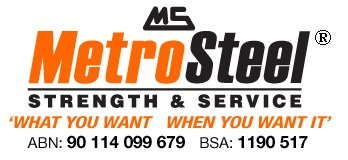Since the industrial revolution, methods for processing steel have evolved significantly. However the same processes used in the original Bessemer production are still in place today. Nowadays, there are several different ways of processing steel but despite this, modern steel processing can be broken down into 6 steps. These are as follows.
Iron-making
This is the first step towards stainless steel production and raw materials including iron ore, coke, and lime are placed into a blast furnace to produce what’s known as molten steel. However this molten metal still contains somewhere between 4% and 5% carbon and a selection of other impurities which, when combined together, make it brittle. These therefore need to be removed. This is where the Primary steel-making process comes in.
Primary steel-making
If the iron making process has been completed by basic oxygen steel-making (BOS) then the molten ore needs to be converted to a purer metal. In order to do this, air is blown through the metal at very high temperatures.
Alternatively, using the electrical arc furnace (EAF) principle, fragments of recycled steel are fed through high powered electric arcs This does the same job and reduces the carbon content to somewhere between 0 and 1.5%. Even though at this point the composition resembles something that acts like steel, it’s still a pretty low quality material at this stage, this is why it goes through another process.
Secondary steel-making
At this point the molten steel needs to be treated. In doing so, the composition can be adjusted by manipulating the temperature of the steel or by adding or removing certain elements. This is done using a wide range of methods including:
-
Stirring
-
Ladle injection
-
Ladle furnacing
-
Degassing
-
Composition adjustment using oxygen
Continual casting
By this stage the molten ore is taking on more of the properties of steel but it now needs to go through another process known as continual casting. At this stage the molten steel is placed into a cooling mould and cast. It’s then left to solidify. Using guided rollers the thin shell is removed and fully cooled. The shell is them cut into desired lengths and moulded into rough shapes depending upon application. These include:
-
Slabs for plates and strips
-
Blooms for sections including beams
-
Billets for long products including strips and wires
Primary forming
Stage 5 is the process of taking the slabs, blooms or billets and turning them into recognisable products. This is known as primary forming. Primary forming is often done by hot rolling which helps to eliminate cast defects while achieving the desired casting shape.
Fabrication and finishing
Finally the desired products are ready for stage 6 of the process which is giving the steel products their final shapes and properties. Techniques for fabrication and finishing include:
-
Machining (drilling)
-
Joining (welding)
-
Coating (galvanising)
-
Shaping (cold rolling/pressing)
-
Heat treatment (tempering)
-
Surface treatment (carburising)
Here at Metro Steel we fabricate and finish a wide range of steel products to meet customers’ specifications or needs. If you’re in need of a particular component, machine part or design, then we’d love to help. Contact us on 07 3204 1000 and talk to an expert today.
 Talk to an Expert (07) 3204 1000
Talk to an Expert (07) 3204 1000 Working Hours - Mon – Fri 7:00 AM – 4:00 PM
Working Hours - Mon – Fri 7:00 AM – 4:00 PM